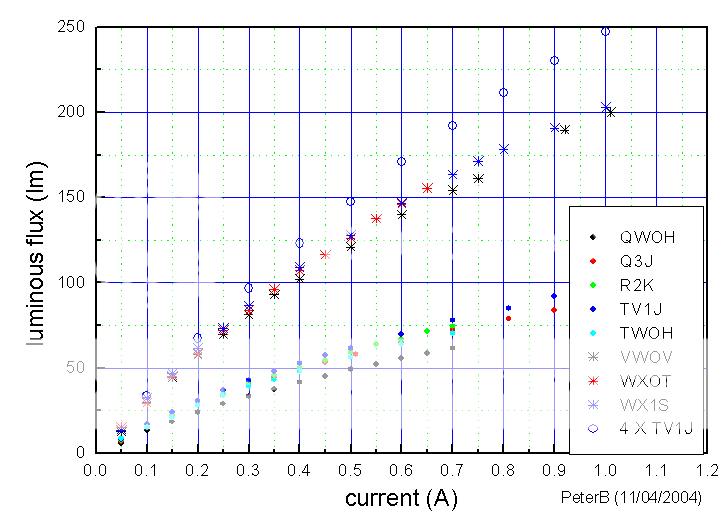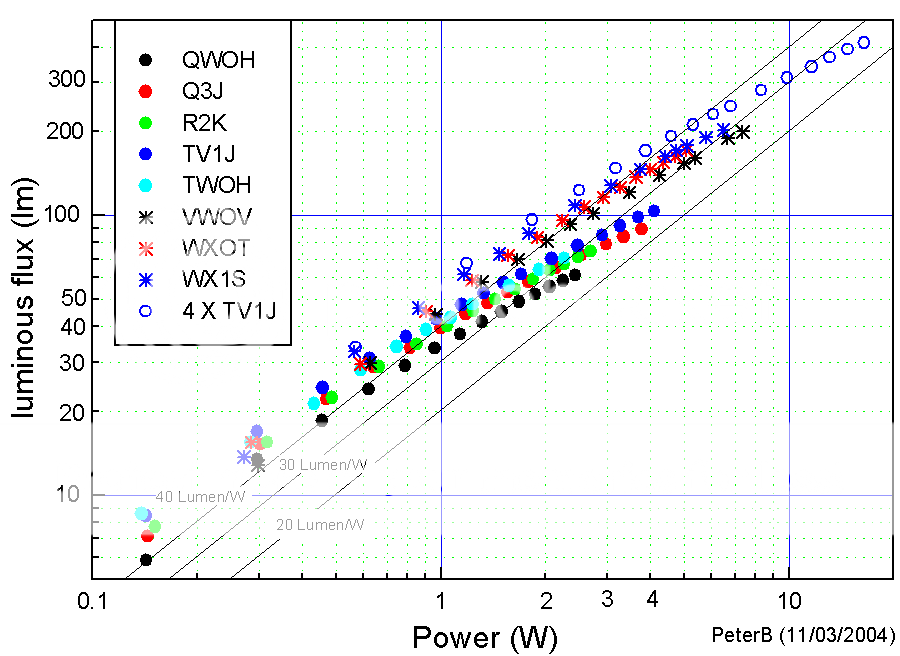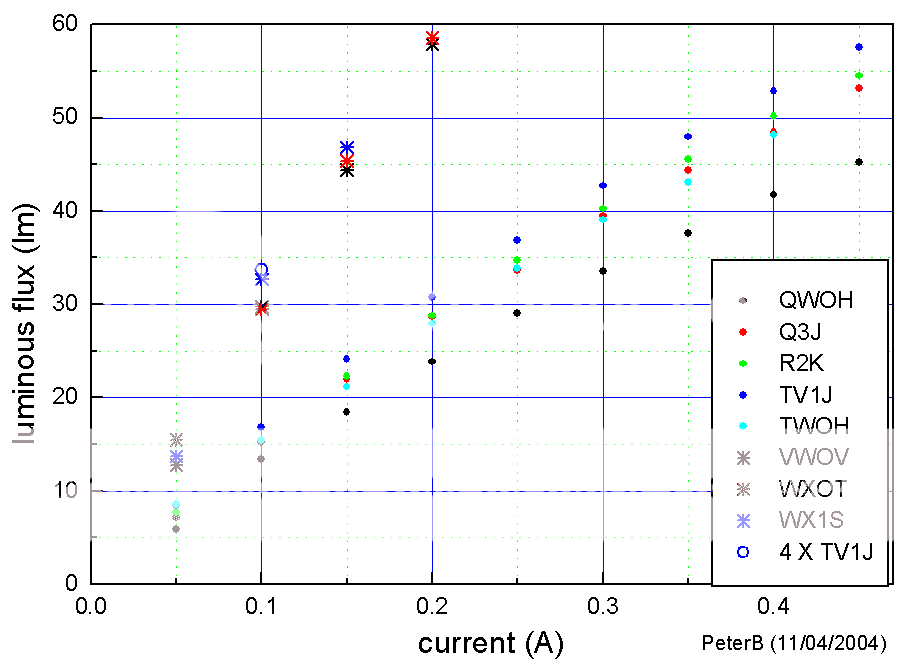I have added a nice Gossen Mavolux lightmeter (with calibrated V(Lambda) curve) to my equipment and have used it to characterize some of my luxeons with different bins.
I have tried to measure lumen output with the following methodology and assumptions (comments or critisism is welcome):
The fraen lp datasheet specifies 13.4cd/lm efficiency Fraen LP datasheet, therefore it is possible to estimate the lumen output of a Luxeon I and III colimated by a FraenLP by dividing the Lux reading at 1m by 13.4.
I have used such calculated lumen values to calibrate a simple white integrating box. The measurement with such a box is much easier and allows the tranfer to Luxeon V.
The TWOH was an emitter, while all other LEDs are stars. I have used a big copper plate (20cmX40cm, 2mm thick) for cooling.
Ok, here are the results:
Lumen vs. drive current:

Lumen vs. power (log/log)

The 4XTV1J curve is calculated from the TV1J data by doubling the voltage and current and multiplying the light output by 4. This should simulate the parallel/serial configuration of a LuxV.
Some conclusions:
- LuxI behaves the same way as LuxIII
- LuxV has its main advantages above 2W
- The percentage lumen increase of a better bin is independent of the drive level (parallel shift of the curve in the log plot)
- 4X LuxIII is better than LuxV above about 1W, probably due to the improved thermal resistance.
I have tried to measure lumen output with the following methodology and assumptions (comments or critisism is welcome):
The fraen lp datasheet specifies 13.4cd/lm efficiency Fraen LP datasheet, therefore it is possible to estimate the lumen output of a Luxeon I and III colimated by a FraenLP by dividing the Lux reading at 1m by 13.4.
I have used such calculated lumen values to calibrate a simple white integrating box. The measurement with such a box is much easier and allows the tranfer to Luxeon V.
The TWOH was an emitter, while all other LEDs are stars. I have used a big copper plate (20cmX40cm, 2mm thick) for cooling.
Ok, here are the results:
Lumen vs. drive current:

Lumen vs. power (log/log)

The 4XTV1J curve is calculated from the TV1J data by doubling the voltage and current and multiplying the light output by 4. This should simulate the parallel/serial configuration of a LuxV.
Some conclusions:
- LuxI behaves the same way as LuxIII
- LuxV has its main advantages above 2W
- The percentage lumen increase of a better bin is independent of the drive level (parallel shift of the curve in the log plot)
- 4X LuxIII is better than LuxV above about 1W, probably due to the improved thermal resistance.



